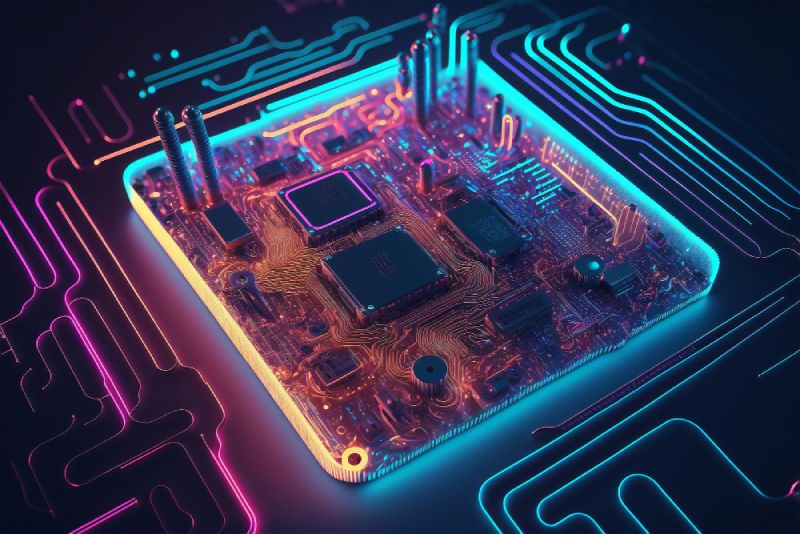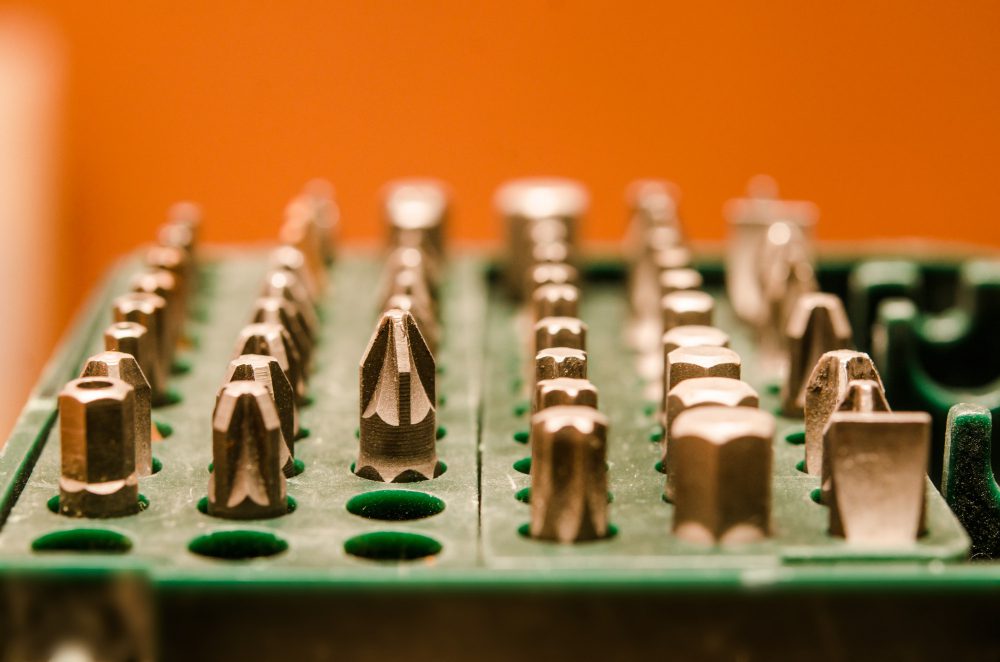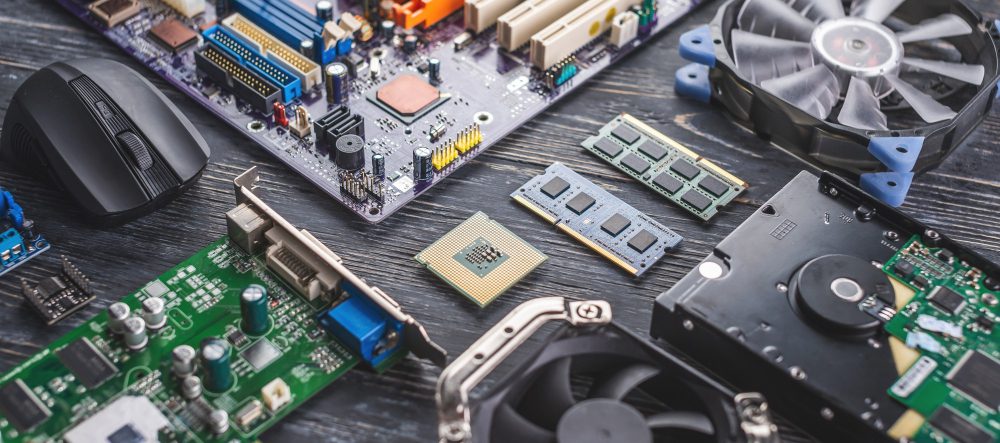Does motherboard affect GPU?
The motherboard is an essential component of any computer system, acting as a central hub that connects all other hardware components. It provides the infrastructure necessary for different parts to communicate and work together seamlessly. When it comes to the question of whether the motherboard affects the GPU (Graphics Processing Unit), the answer is both yes and no.
Compatibility and Performance:
One way in which the motherboard can affect the GPU is through compatibility and performance. The motherboard needs to have a compatible slot, such as a PCI Express x16 slot, to accommodate the GPU. If the motherboard does not have the appropriate slot or if it is outdated, it may not support certain GPUs or limit their performance.
It’s important to note that a higher-end GPU may require a more powerful motherboard with better power delivery capabilities. Inadequate power can lead to unstable performance or even system crashes. Therefore, when choosing a GPU, it is crucial to consider the compatibility and power requirements of both the motherboard and the GPU.
Bandwidth and Bottlenecking:
The motherboard also plays a role in determining the bandwidth available to the GPU. Bandwidth refers to the speed at which data can be transferred between the GPU and other components, such as the CPU and RAM.
If the motherboard has limited bandwidth or if the connection between the GPU and the motherboard is bottlenecked, it can hinder the GPU’s performance. This can result in lower frame rates, slower rendering times, and overall diminished graphics capabilities.
Blockquote Example:
“A bottleneck can occur when the GPU’s performance is limited by the capabilities of the motherboard. Upgrading to a motherboard with higher bandwidth can help unleash the full potential of a powerful GPU.”
Expansion and Features:
The motherboard may also affect the expansion options and features available for the GPU. Some motherboards have multiple PCI Express slots, allowing for configurations such as SLI or CrossFire, where multiple GPUs can work together to enhance graphics performance. However, not all motherboards support these configurations, so compatibility should be considered.
In addition, motherboard features like integrated graphics or dedicated GPU slots impact whether the computer can make use of both integrated and discrete graphics simultaneously. This can be relevant for certain applications, such as video editing or gaming.
Does GPU affect FPS?
When it comes to gaming, one of the most important factors that determines the overall performance and smoothness of gameplay is the FPS (Frames Per Second). The FPS value indicates how many frames are being displayed on your screen every second. A higher FPS is generally desirable as it provides a smoother and more responsive gaming experience.
What is GPU?
GPU stands for Graphics Processing Unit, which is responsible for rendering the images, videos, and animations on your computer screen. It handles all the graphical computations required for displaying games and other visual content. The GPU works in conjunction with the CPU (Central Processing Unit) to deliver a seamless gaming experience.
Impact of GPU on FPS
The GPU has a direct impact on the FPS in games. A more powerful and capable GPU can handle the graphics workload more efficiently, resulting in higher FPS. On the other hand, a weaker GPU may struggle to keep up with demanding graphics, leading to lower FPS and a choppy gameplay experience.
It’s important to note that the impact of the GPU on FPS depends on various factors:
- The complexity of the game’s graphics: Games with advanced graphics and realistic visuals require a more powerful GPU to maintain a higher FPS.
- The resolution and display settings: Higher resolutions and graphics settings put more strain on the GPU, potentially decreasing the FPS.
- The CPU’s performance: While the GPU primarily handles graphics rendering, a bottleneck in the CPU’s performance can limit the overall FPS even with a powerful GPU.
Quote:
“A powerful GPU can significantly enhance the gaming experience by delivering smooth and visually stunning gameplay.”
To demonstrate the impact of GPU on FPS, let’s consider a comparison:
| GPU | FPS (Game A) | FPS (Game B) |
|---|---|---|
| Entry-Level | 30 | 45 |
| Mid-Range | 60 | 75 |
| High-End | 120 | 144 |
The table above illustrates the FPS performance of different GPUs in two games. As you can see, a higher-end GPU consistently provides higher FPS compared to an entry-level GPU.
In conclusion, the GPU plays a crucial role in determining the FPS in gaming. Investing in a powerful GPU is essential for gamers who seek smoother gameplay and better graphics. However, other factors such as game complexity, display settings, and CPU performance should also be considered to optimize the overall gaming experience.
Do motherboards accept all GPUs?
The compatibility between motherboards and graphics processing units (GPUs) is an important consideration for PC builders and gamers. While there are various factors that determine whether a motherboard can accept a specific GPU, it is generally true that motherboards have certain requirements to support different GPUs.
Form Factors and Slots
One of the primary factors influencing GPU compatibility is the form factor of the motherboard, which determines the size and layout of its expansion slots. The most common form factors for motherboards include ATX, Micro-ATX, and Mini-ITX. These form factors have different sizes and configurations, which means that not all GPUs will physically fit into every motherboard.
Furthermore, motherboards have specific slots for connecting GPUs, such as PCIe (Peripheral Component Interconnect Express) slots. GPUs come in various versions, such as PCIe 3.0 or PCIe 4.0, and it’s essential to ensure that the motherboard has compatible PCIe slots that can provide the necessary bandwidth for the GPU.
Power Requirements
Another crucial consideration is the power requirements of GPUs. High-performance GPUs typically require additional power connectors, such as 6-pin or 8-pin connectors, directly from the power supply unit (PSU). Motherboards need to have the necessary connectors and provide sufficient power delivery capabilities to support these power-hungry GPUs.
BIOS Compatibility
Besides physical compatibility, GPUs also need to be compatible with the motherboard’s BIOS (Basic Input/Output System). The BIOS contains firmware that enables communication between the hardware components, including the GPU. It is important to keep the motherboard’s BIOS updated to ensure compatibility with the latest GPUs. In some cases, older motherboards may require BIOS updates to support newer GPU models.
Is a 5 Year Old GPU Good?
A Graphics Processing Unit (GPU) is an essential component of a computer system, responsible for rendering images, videos, and animations. As technology advances rapidly, newer and more powerful GPUs are released frequently. This raises the question: “Is a 5-year-old GPU still good enough for modern computing needs?”
Performance Considerations
When evaluating the performance of a GPU, several factors come into play. These include the GPU’s architecture, memory capacity, clock speed, and compatibility with the latest software and drivers. While a 5-year-old GPU may have been top-of-the-line in its prime, it is likely to fall behind in terms of raw performance compared to newer models.
However, this doesn’t necessarily mean that a 5-year-old GPU is completely obsolete. It might still be capable of handling everyday tasks like web browsing, office applications, and even some casual gaming. The key is to understand the specific requirements of the software you intend to use and determine whether your GPU meets those requirements.
The Importance of Drivers and Software Support
One crucial aspect to consider when using an older GPU is driver support. GPU manufacturers regularly release new drivers to optimize performance and compatibility with the latest games and software updates. Unfortunately, manufacturers tend to prioritize driver updates for their newer products, potentially leaving older GPUs without adequate support.
To ensure optimal performance, it’s vital to keep your GPU drivers updated. Check the manufacturer’s website regularly for the latest driver downloads and verify if your specific GPU model is still receiving updates. Without proper driver support, you may encounter compatibility issues and miss out on performance improvements.
Future-Proofing and Upgrading
While a 5-year-old GPU may still be functional, it’s essential to consider your long-term computing needs. If you’re an avid gamer or plan to undertake tasks that demand more graphical horsepower, upgrading to a newer GPU becomes a wise investment.
Upgrading your GPU can provide significant performance improvements, allowing you to run the latest games and software with higher visual fidelity and smoother framerates.
Additionally, advancements in GPU technology often result in improved power efficiency, meaning newer GPUs consume less energy while delivering better performance. This can lead to reduced electricity bills and a quieter overall system.
Is it OK to buy 2nd hand GPU?
Introduction
When it comes to purchasing computer components, one of the options to consider is buying second hand. This article explores whether it is a good idea to buy a second hand GPU (Graphics Processing Unit) for your computer.
Pros of buying second hand GPU
There are several advantages to buying a second hand GPU:
- Cost savings: Second hand GPUs are often significantly cheaper than brand new ones, allowing you to save money while still getting a capable graphics card.
- Availability of older models: Sometimes, older GPU models that are no longer available new can still be found in the second hand market. This can be useful if you are looking for specific features or compatibility with older systems.
Cons of buying second hand GPU
However, there are also some potential downsides to be aware of:
- No warranty: Unlike buying a brand new GPU, purchasing second hand means you won’t have the protection of a warranty. If the GPU encounters issues after purchase, you may have to bear the cost of repairs or replacement.
- Risk of scams and counterfeit products: The second hand market can be a breeding ground for scammers trying to sell fake or faulty products. It’s important to exercise caution and buy from reputable sellers with good ratings.
Things to consider before buying
If you decide to buy a second hand GPU, here are a few factors to consider:
- Condition and usage history: Ask the seller about the condition of the GPU and how it was used. Look for any signs of physical damage or excessive wear and tear.
- Compatibility: Ensure that the GPU is compatible with your system’s specifications, including the slot type, power requirements, and drivers.
Can a GPU fry a motherboard?
Introduction
A Graphics Processing Unit (GPU) is an essential component of a computer system responsible for rendering images, videos, and other visual elements on a display. It works in conjunction with the motherboard, which acts as the central hub connecting various hardware components. While GPUs are designed to work seamlessly with motherboards, there have been instances where malfunctioning or poorly installed GPUs can potentially damage the motherboard.
The Risks of Overheating
One of the primary concerns when it comes to GPUs damaging motherboards is overheating. GPUs generate a significant amount of heat during operation, and if not adequately cooled, it can lead to hardware failure. When a GPU overheats, it may cause the solder connections on the GPU’s circuit board to melt or warp, affecting the electrical pathways that connect it to the motherboard. This can result in a short circuit or even a complete failure of the motherboard.
Compatibility Issues
Another potential risk of a GPU damaging a motherboard is compatibility issues. GPUs come in different form factors, such as PCIe cards or integrated into the motherboard. It is crucial to ensure that the GPU is compatible with the motherboard’s slot or interface. Using an incompatible GPU or forcefully installing it can damage the motherboard’s slots or cause electrical damage due to mismatched voltage requirements.
Power Supply Problems
An inadequate power supply can also contribute to GPU-related motherboard damage. GPUs require a substantial amount of power to operate efficiently, and if the power supply unit (PSU) doesn’t provide enough power or has faulty connections, it can cause fluctuations or overloads. These electrical issues can damage not only the GPU but also the motherboard and other connected components.
Prevention and Precautions
To reduce the risk of a GPU frying a motherboard, several precautions can be taken:
- Ensure proper cooling by maintaining adequate airflow and temperature control within the computer case.
- Use high-quality and compatible components that meet the power requirements of the GPU and motherboard.
- Regularly clean and remove dust build-up from the GPU and other hardware components to prevent overheating.
- Properly install and secure the GPU in the motherboard’s slot, ensuring a secure and stable connection.
- Use a reliable power supply unit with sufficient wattage and proper cabling.
It is essential to follow proper installation procedures and regularly maintain your computer system to minimize the risk of motherboard damage caused by GPUs.
In conclusion, while GPUs are generally safe to use with motherboards, there is a potential risk of damage if not handled properly. Overheating, compatibility issues, and power supply problems are factors that can contribute to motherboard damage. By taking necessary precautions and following proper installation procedures, the risk of a GPU frying a motherboard can be significantly reduced.
Conclusion
In summary, not all GPUs are compatible with all motherboards. Compatibility is influenced by factors such as form factor, expansion slots, power requirements, and BIOS compatibility. It is crucial to check the specifications of both the motherboard and the GPU before making a purchase. Additionally, staying informed about firmware updates and compatibility lists provided by manufacturers can help determine if a specific GPU will be compatible with a particular motherboard.
In summary, while a 5-year-old GPU may still function adequately for everyday tasks, it might struggle with more demanding applications and modern games. Keeping your GPU drivers up to date is crucial for optimal performance. If you’re looking to future-proof your system or require better performance, upgrading to a newer GPU is recommended. Evaluate your computing needs, consider your budget, and make an informed decision based on these factors.
In summary, buying a second hand GPU can be a viable option for those on a budget or looking for specific older models. However, it is important to weigh the advantages and disadvantages, exercise caution, and thoroughly research the product and seller before making a purchase decision.



